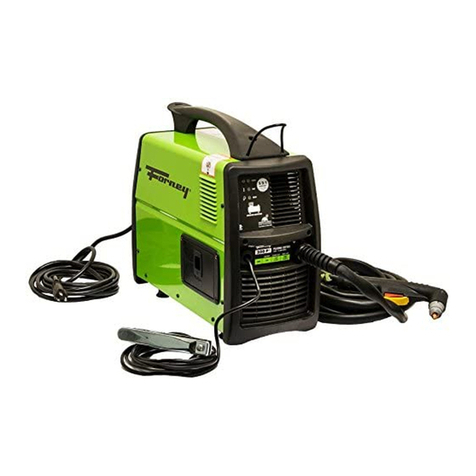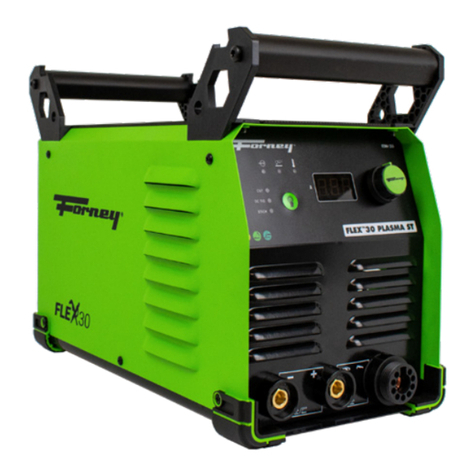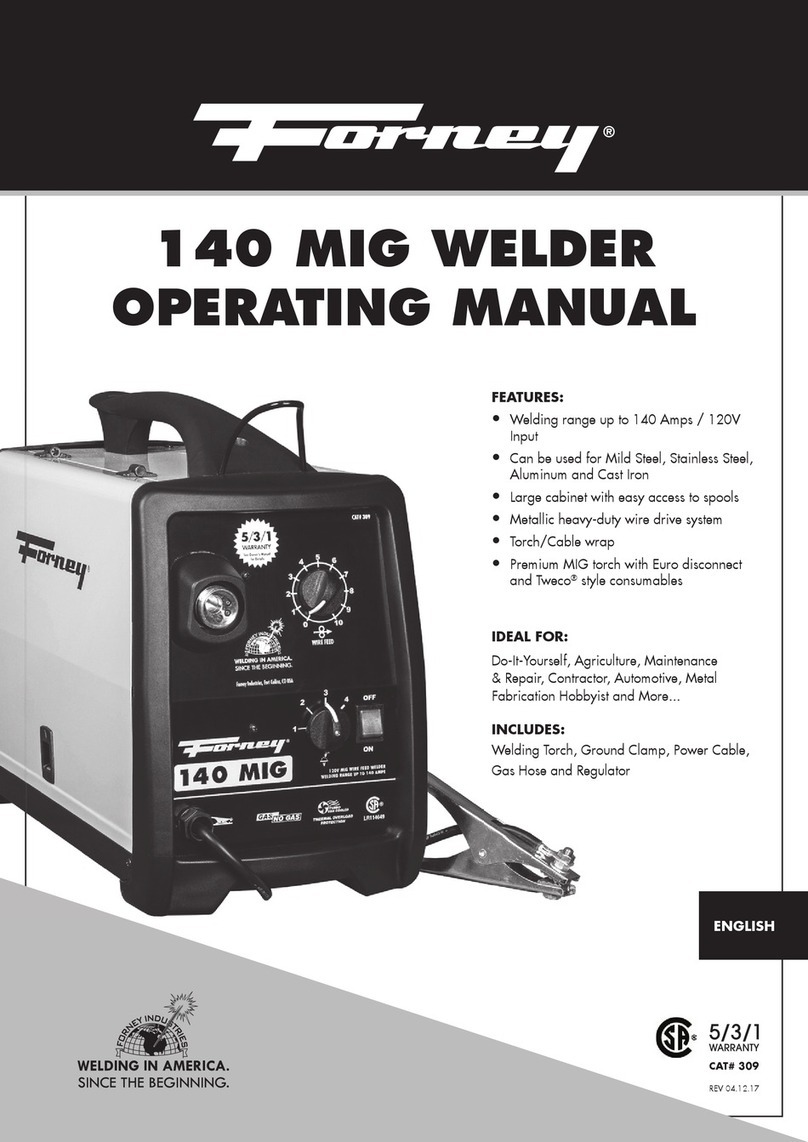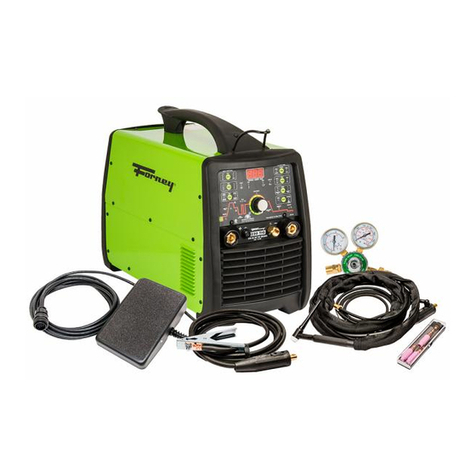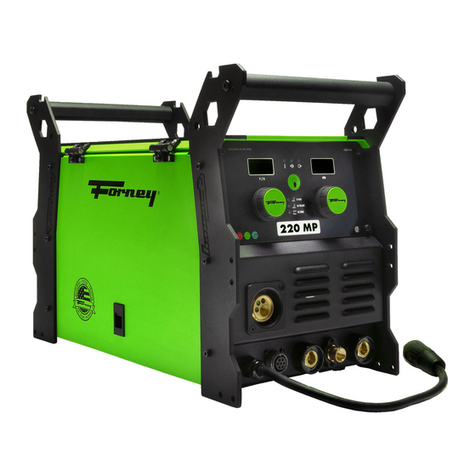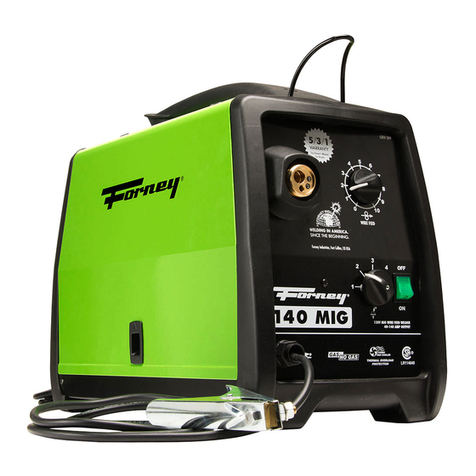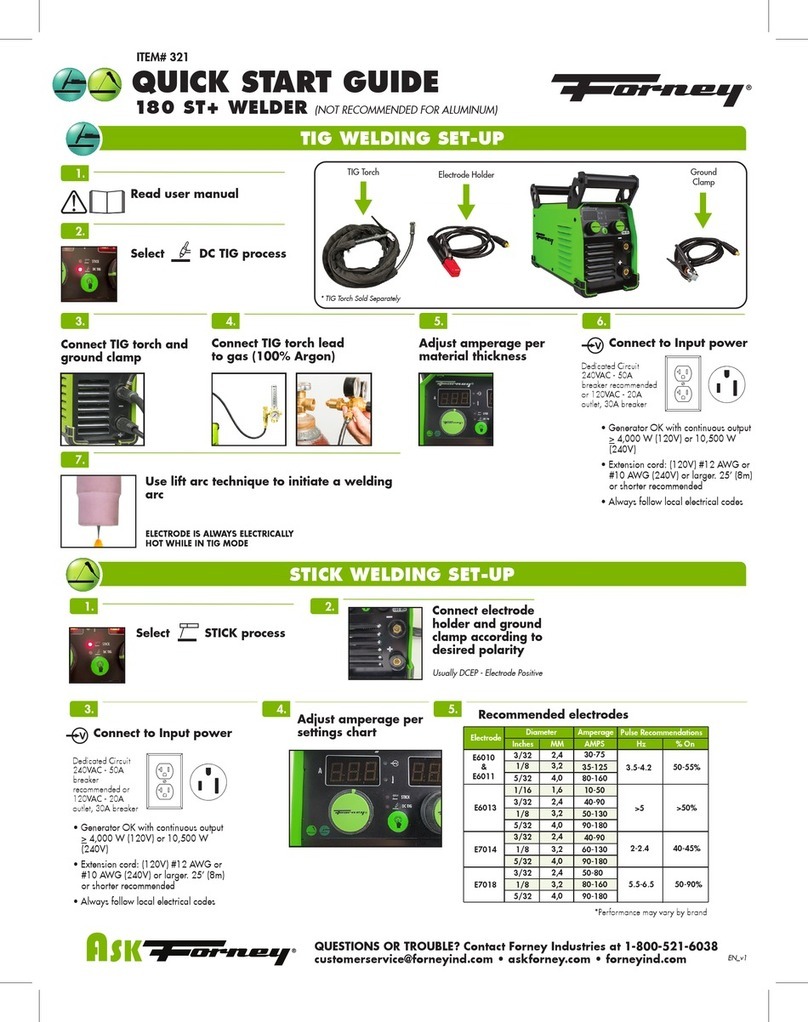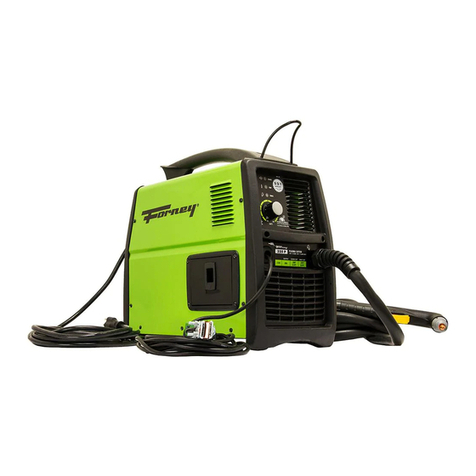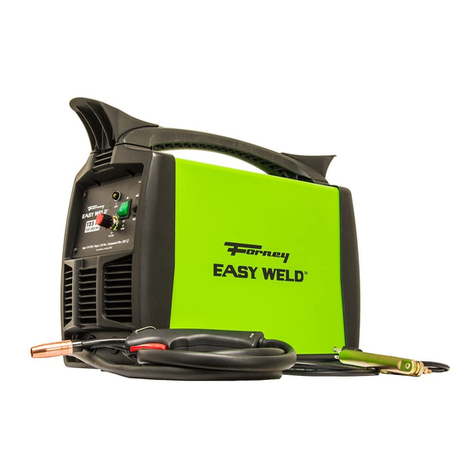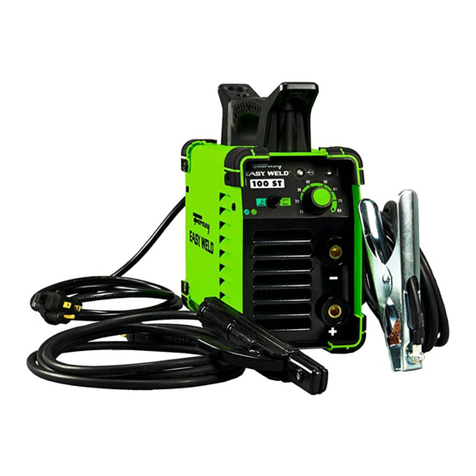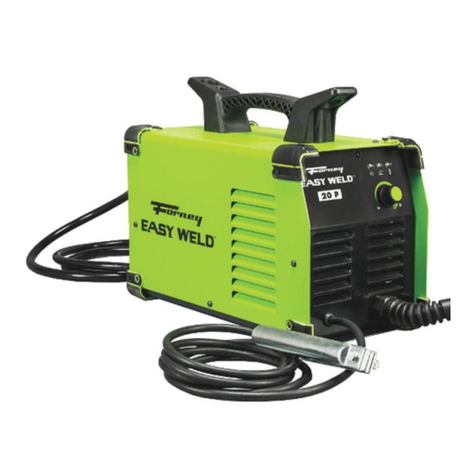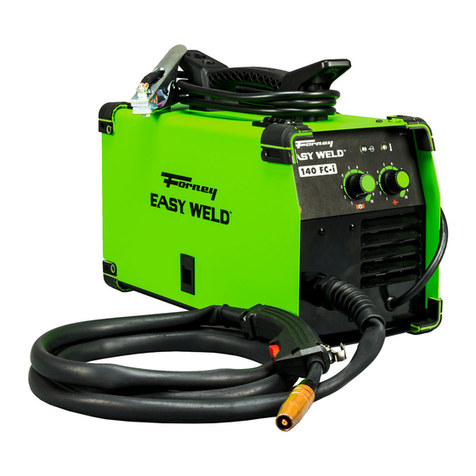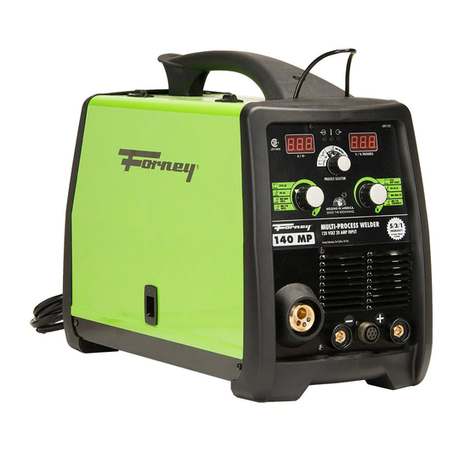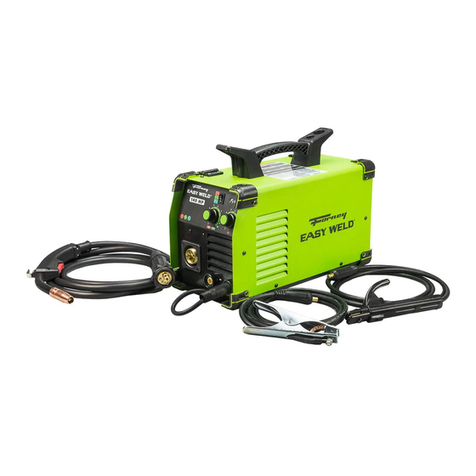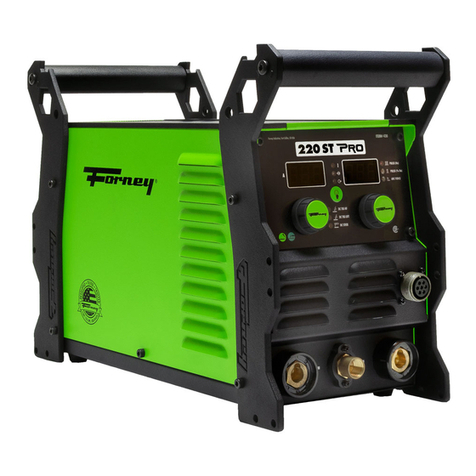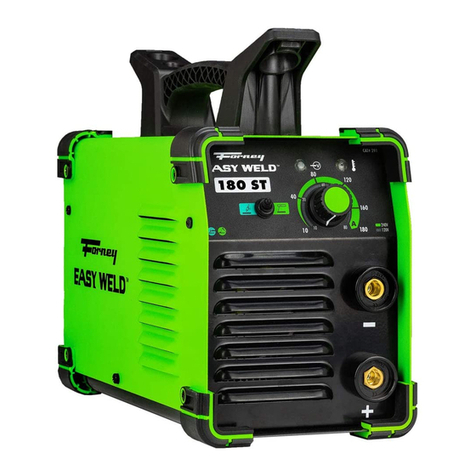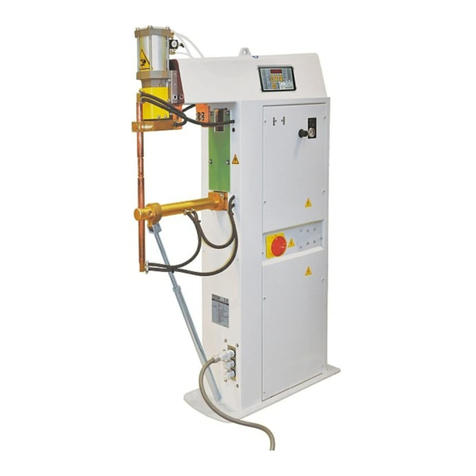• Do not weld, cut or heat lead, zinc, cadmium, mercury, beryllium, antimony, cobalt,
manganese, selenium, arsenic, copper, silver, barium, chromium, vanadium, nickel, or
similar metals without seeking professional advice and inspection of the ventilation of the
welding area. These metals produce extremely toxic fumes which can cause discomfort,
illness and death.
• Do not weld or cut in areas that are near chlorinated solvents. Vapors from chlorinated
hydrocarbons, such as trichloroethylene and perchloroethylene, can be decomposed by the
heat of an electric arc or its ultraviolet radiation. These actions can cause phosgene, a highly
toxic gas, to form, along with other lung and eye-irritating gasses. Do not weld or cut where
these solvent vapors can be drawn into the work area or where the ultraviolet radiation can
penetrate to areas containing even very small amounts of these vapors.
• Do not weld in a confined area unless it is being ventilated or the operator (and anyone else
in the area) is wearing an air-supplied respirator.
• Stop welding if you develop momentary eye, nose, or throat irritation as this indicates
inadequate ventilation. Stop work and take necessary steps to improve ventilation in the
welding area. Do not resume welding if physical discomfort persists.
Fire Prevention
FIRE OR EXPLOSION CAN CAUSE DEATH, INJURY, AND PROPERTY DAMAGE!
To reduce these risks, read, understand and follow the safety instructions. In addition, make
certain that anyone else that uses this welding equipment, or is a bystander in the welding
area, understands and follows these safety instructions as well. Remember: arc welding by
nature produces sparks, hot spatter, molten metal drops, hot slag and hot metal parts that can
start fires, burn skin and damage eyes.
• Do not wear gloves or other clothing that contains oil, grease, or other flammable
substances.
• Do not wear flammable hair preparations.
• Do not touch the hot weld bead or weld puddle until fully cooled.
• Do not weld in an area until it is checked and cleared of combustible and/or flammable
materials. Be aware that sparks and slag can fly 35 feet and can pass through small cracks
and openings. If work and combustibles cannot be separated by a minimum of 35 feet,
protect against ignition with suitable, snug-fitting, fire resistant, covers or shields.
• Do not weld on walls until checking for and removing combustibles touching the other side of
the walls.
• Do not weld, cut, or perform other such work on used barrels, drums, tanks, or other
containers that had a flammable or toxic substance. The techniques for removing flammable
substance and vapors, to make a used container safe for welding or cutting, are quite
complex and require special education and training.
• Do not strike an arc on a compressed gas or air cylinder. Doing so will create a brittle
area that can result in a violent rupture immediately or at a later time as a result of rough
handling.
• Do not weld or cut in an area where the air may contain flammable dust (such as grain
dust), gas, or liquid vapors (such as gasoline).
• Do not handle hot metal, such as the work piece or electrode stubs, with bare hands.
• Wear leather gloves, heavy long sleeve shirt, cuffless pants, high-topped shoes, helmet, and
cap. As necessary, use additional protective clothing such as leather jacket or sleeves, fire
resistant leggings, or apron. Hot sparks or metal can lodge in rolled up sleeves, pant cuffs,
or pockets. Sleeves and collars should be kept buttoned and pockets eliminated from the shirt
front.
• Have fire extinguisher equipment handy for immediate use. A portable chemical fire
extinguisher, type ABC, is recommended.
